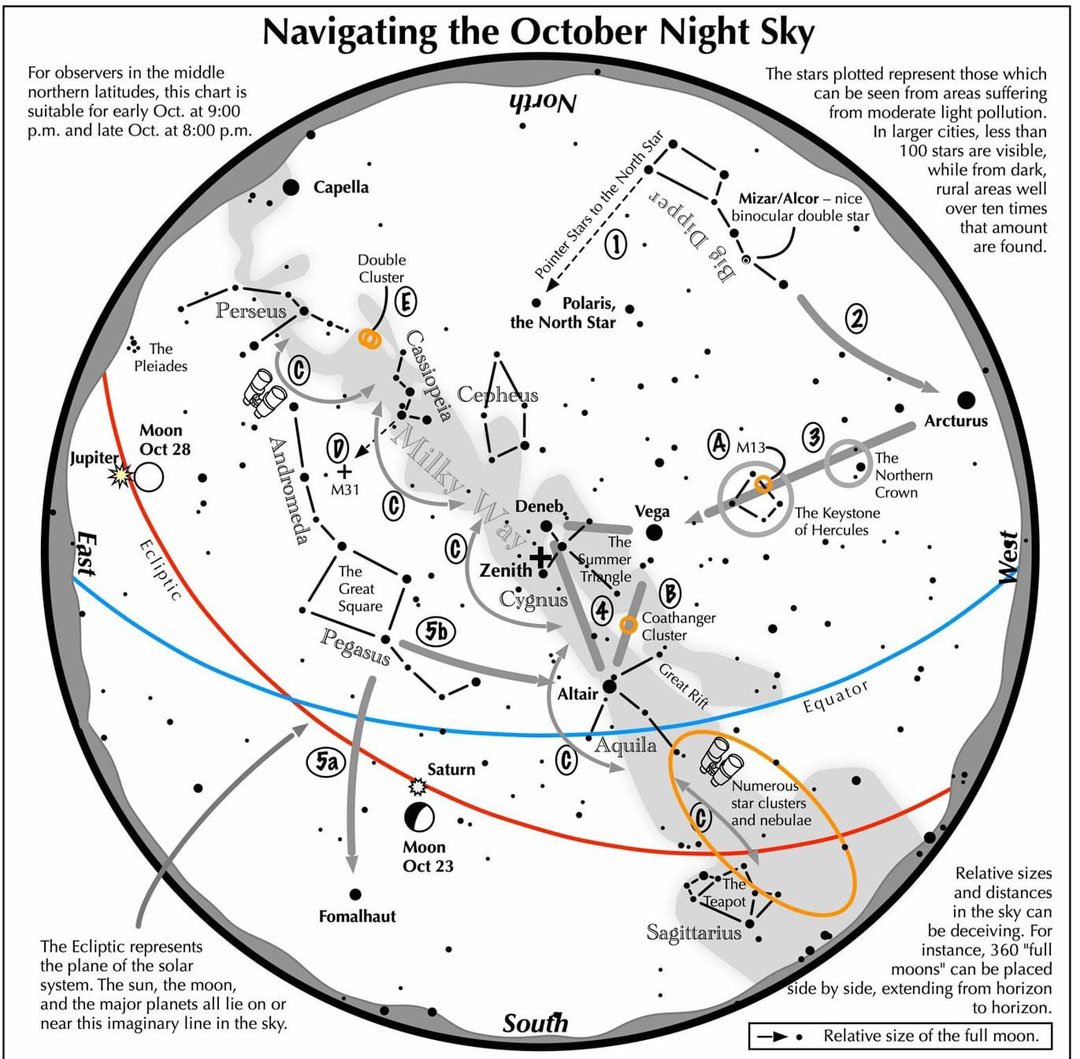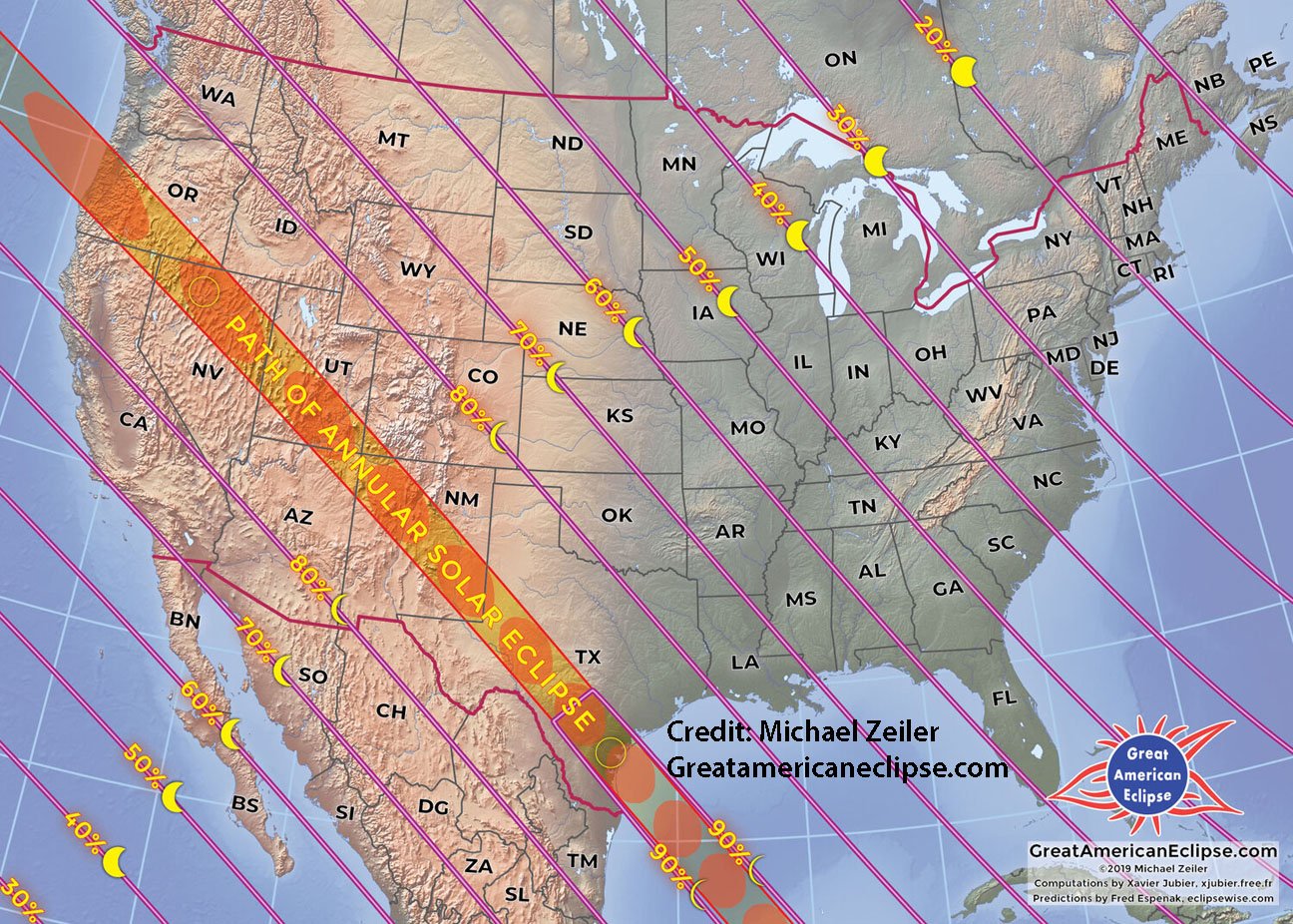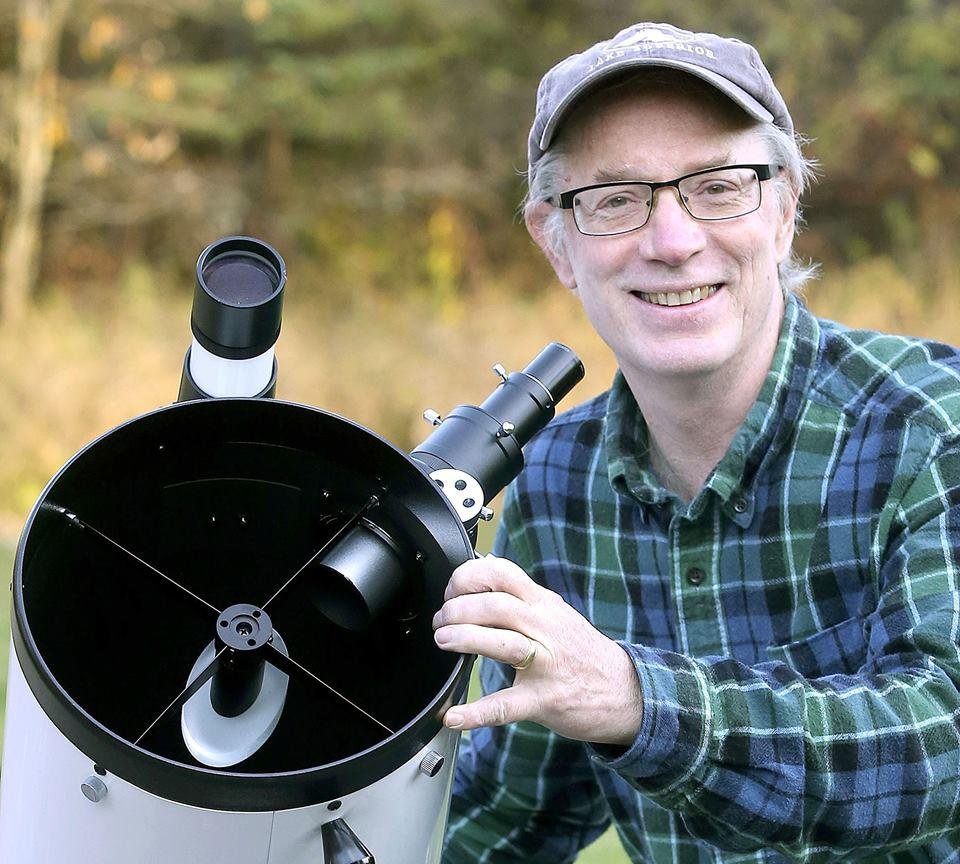October 2023 Night Sky Calendar
Jupiter and Saturn rule the October evening sky while the dawn belongs to radiant Venus. Saturn is visible in the southeastern sky as soon as it gets dark followed in the east by Jupiter around 8:30 p.m. local time. A modest meteor shower, the Orionids, and a solar eclipse highlight the month. October is one of the best times to watch for the northern lights especially as we approach the peak of the current solar cycle in 2024-25. I provide aurora alerts for interested observers at facebook.com/astrobobking.
Events:
October 1 – Waning gibbous moon passes about 2.5 degrees above brilliant Jupiter to make an eye-catching pair
October 6 – Last quarter moon
October 10 (a.m.) – Venus passes 2 degrees south of Regulus, Leo’s brightest star, and 6 degrees south of the waning crescent moon during morning twilight. You’ll see them in a line in the eastern sky.
October 14 – New moon, annular solar eclipse! Visible across much of North and South America. If you live along a narrow path from Oregon, far northern California, Nevada, Utah and Texas you’ll witness a “ring of fire” — with all of the sun covered except a narrow, outer ring. Elsewhere observers will see a partial solar eclipse. Check with your local library about obtaining a safe pair of solar eclipse glasses or buy your own at Rainbow Symphony (https://tinyurl.com/485ffdxt). For eclipse-watching times for your city go to https://www.timeanddate.com/eclipse/solar/2023-october-14 and enter your town’s name in the Eclipse Lookup box.
October 21 – First quarter moon
October 22 (a.m.) – The Orionid meteor shower peaks with 15 to 20 meteors visible per hour from a dark sky location. Orionids radiate from a point in Orion’s upraised club, a little more than 10° north of the bright red star Betelgeuse. Best views will come between 2 a.m. and dawn when Orion commands the sky and the moon has set. Face east or southwest. Dust released by Halley’s Comet spawns the shower.
October 23 (a.m.) – Venus at greatest distance west of the sun. Rises around 3:30 a.m. and remains visible through sunrise — four hours!
October 23 – Waxing gibbous moon passes 3 degrees south of Saturn
October 28 – Full Hunter’s Moon. To find your local moonrise time go to timeanddate.com/moon
October 28 – Moon passes 3 degrees above Jupiter
Bob King is an amateur astronomer, author, and passionate educator. He served as a photographer and photo editor at the Duluth News Tribune for 39 years and taught at the UMD planetarium. Bob’s work had a great impact on Voyageurs National Park. To achieve International Dark Sky Park certification, the park was required to host dark sky education events. Through the Night Sky Explorer webinars, the Conservancy was able to fulfill this component and help secure the certification for Voyageurs National Park. We can’t thank Bob King enough for sharing his talents and knowledge with the Conservancy community to support dark sky preservation.





